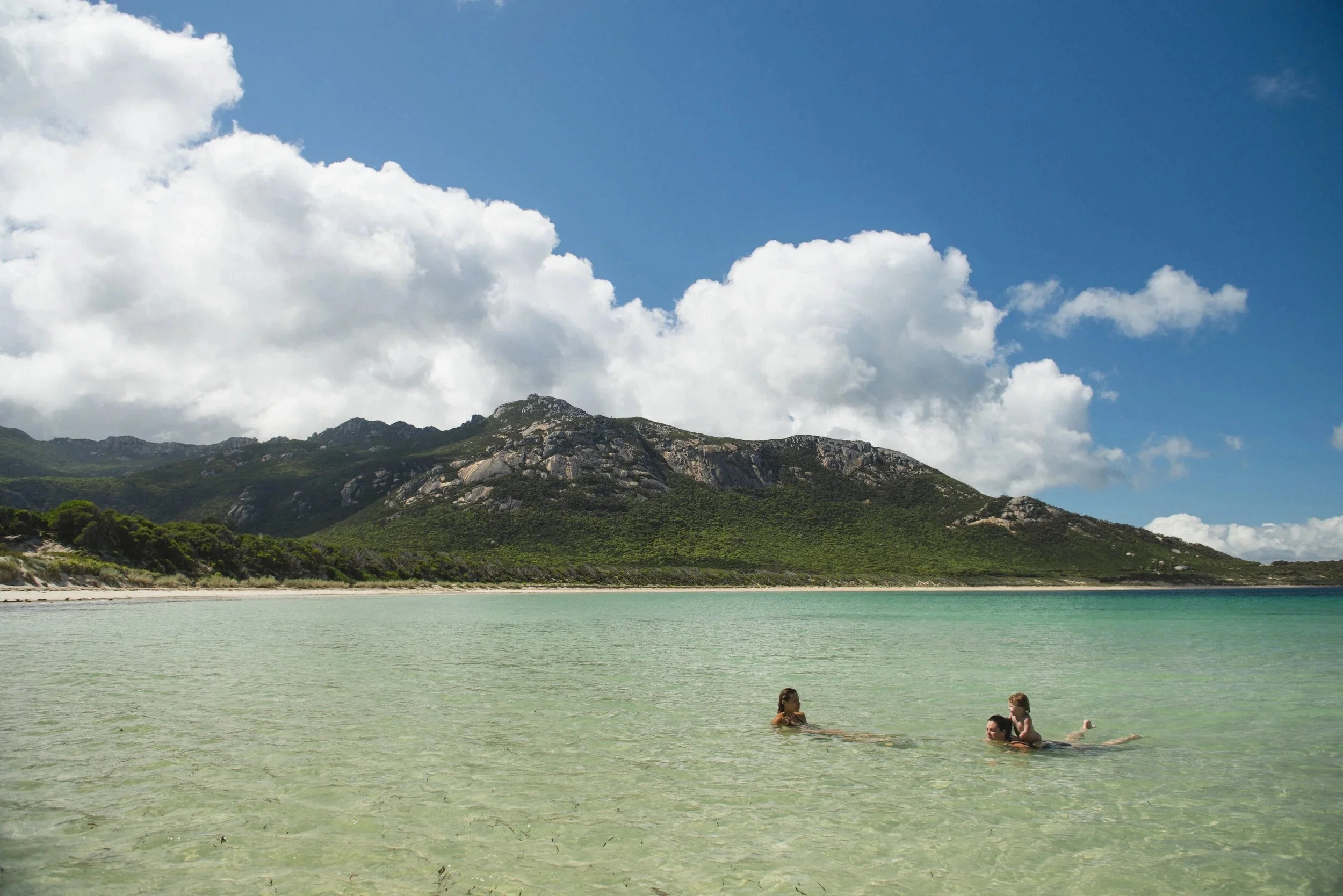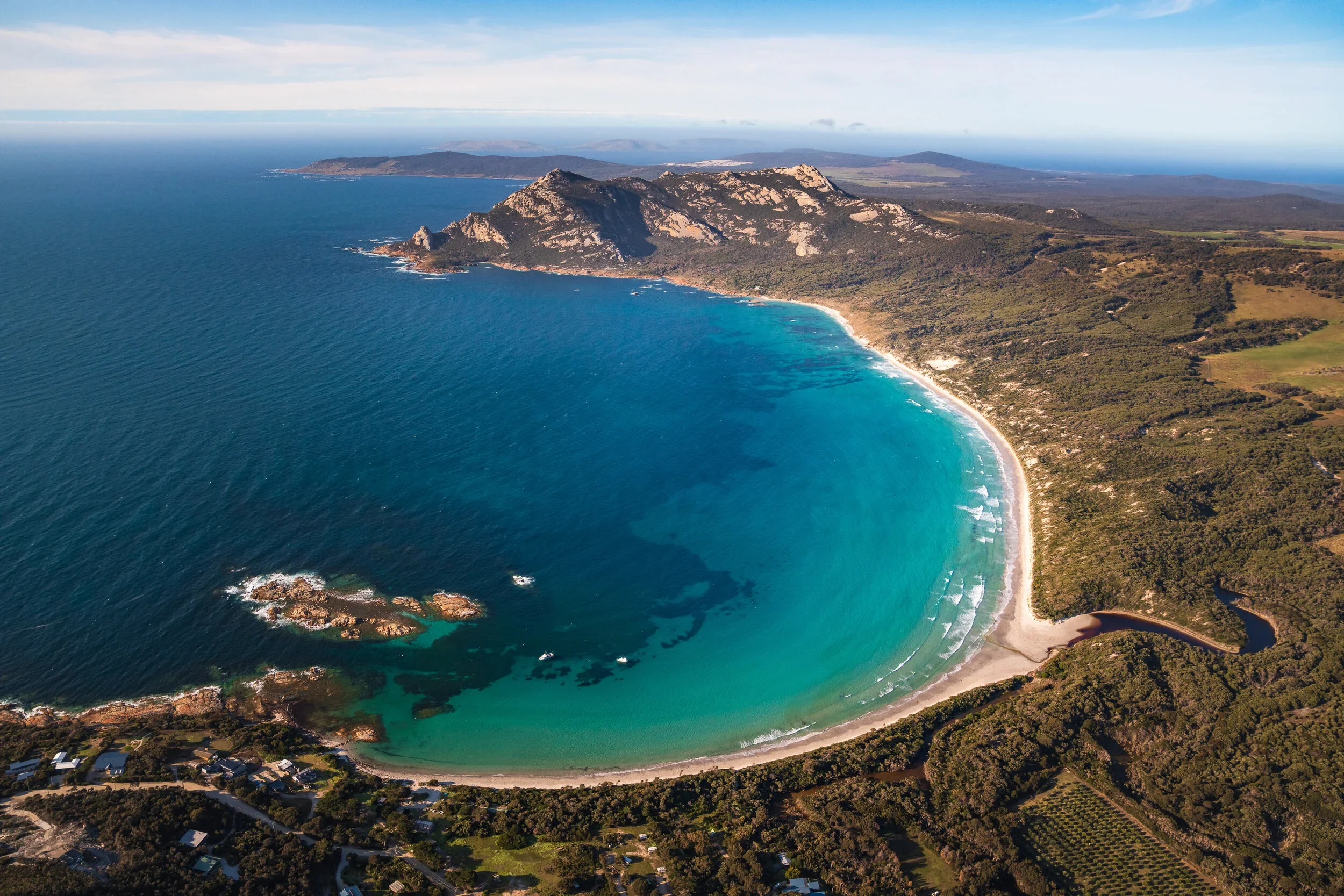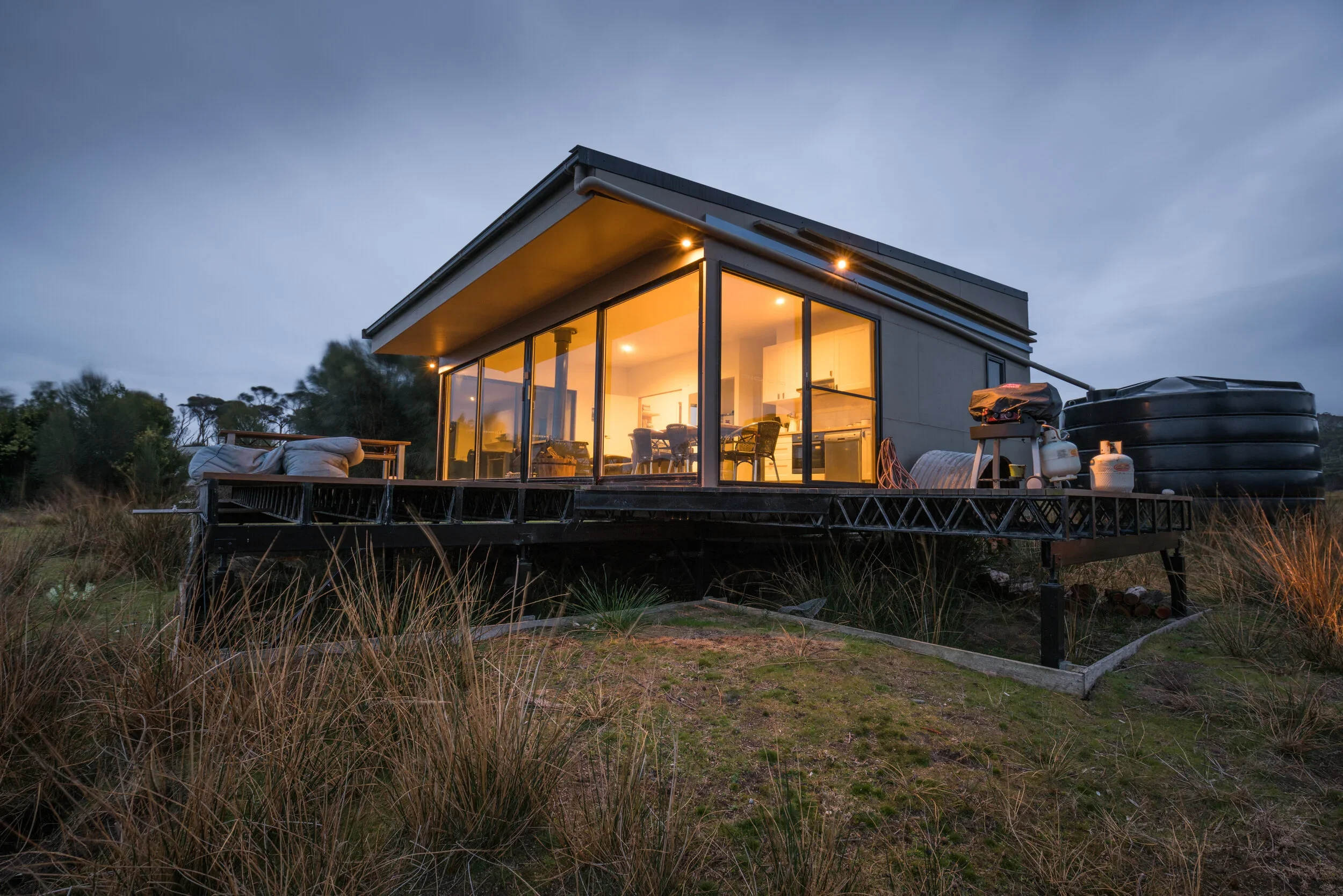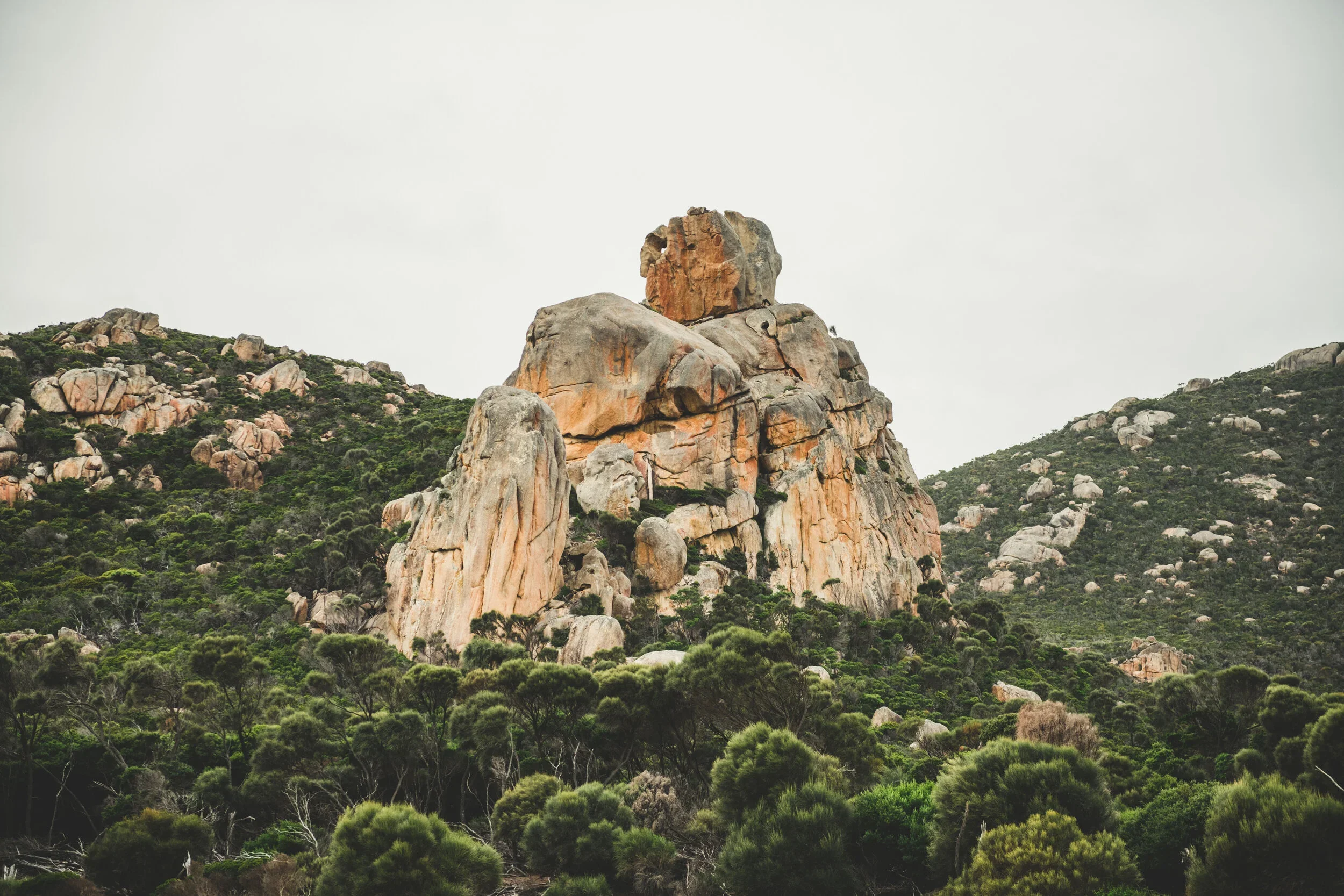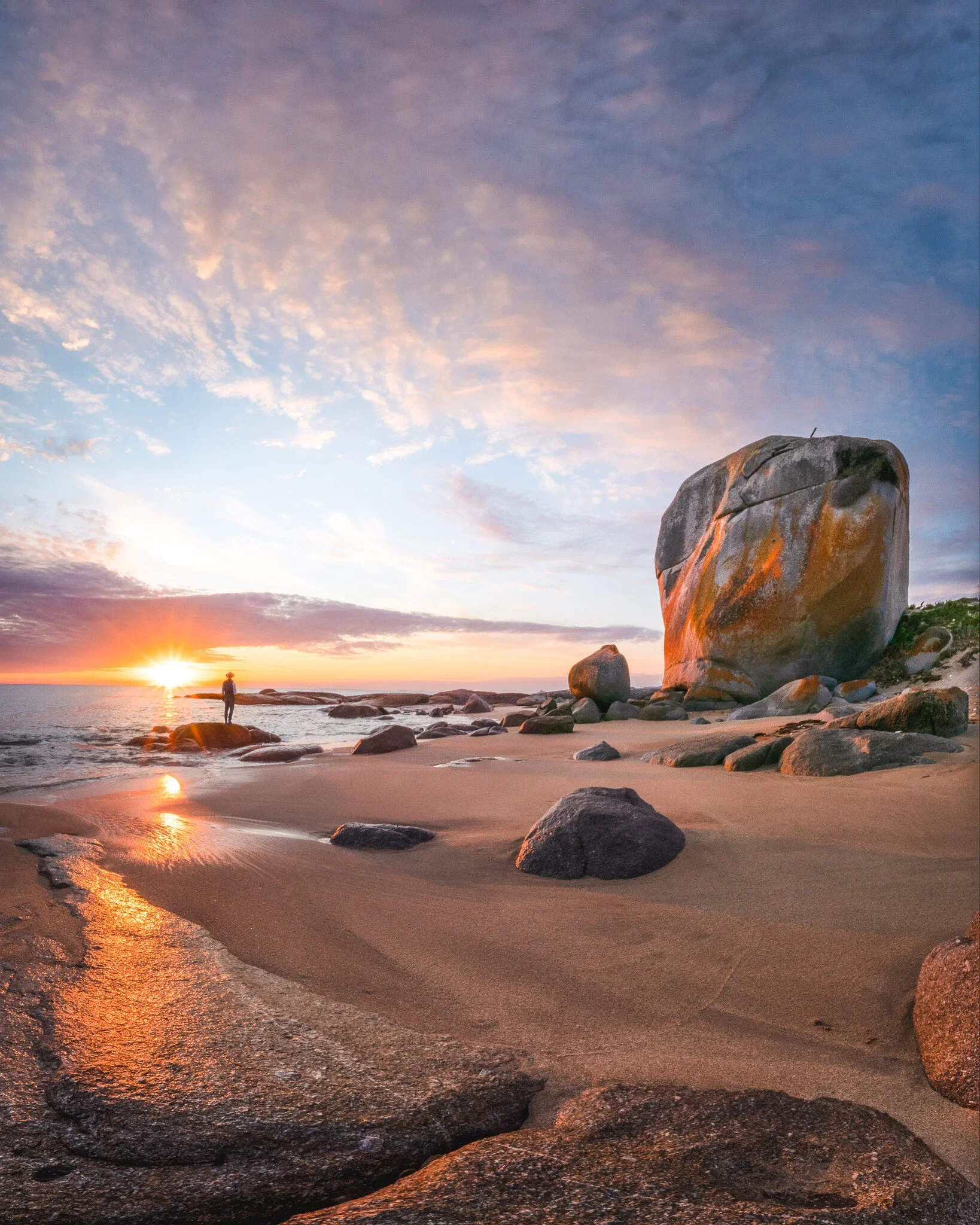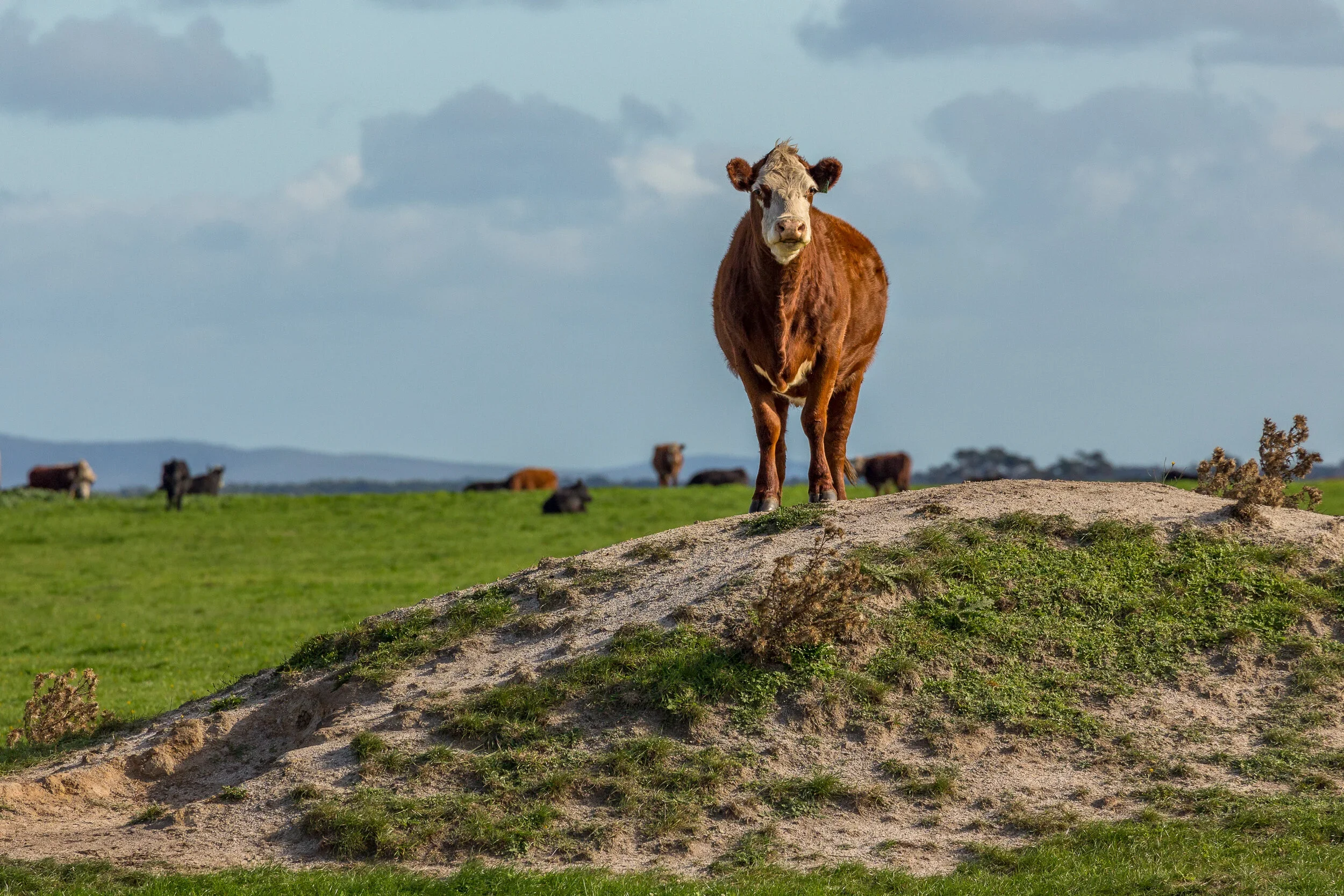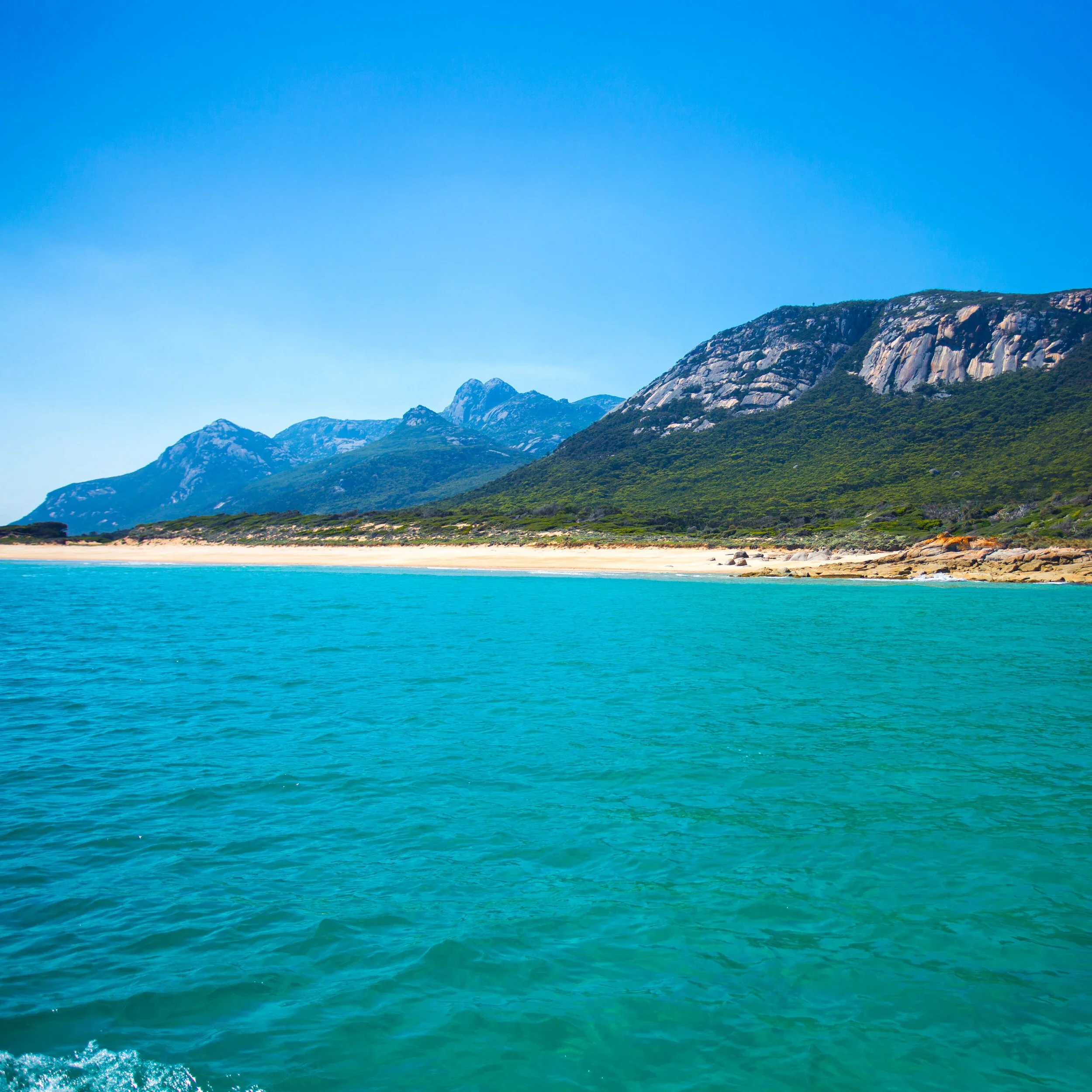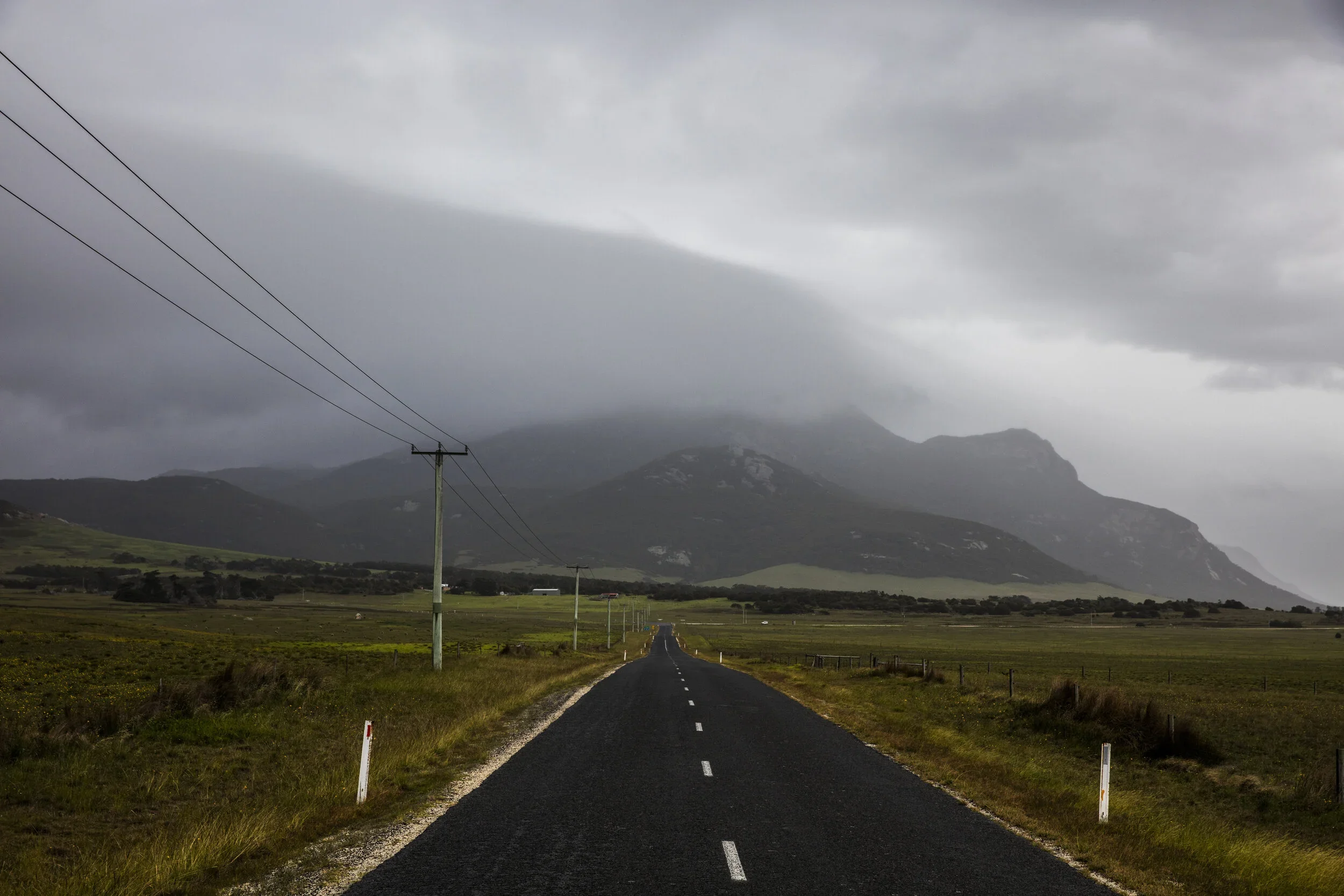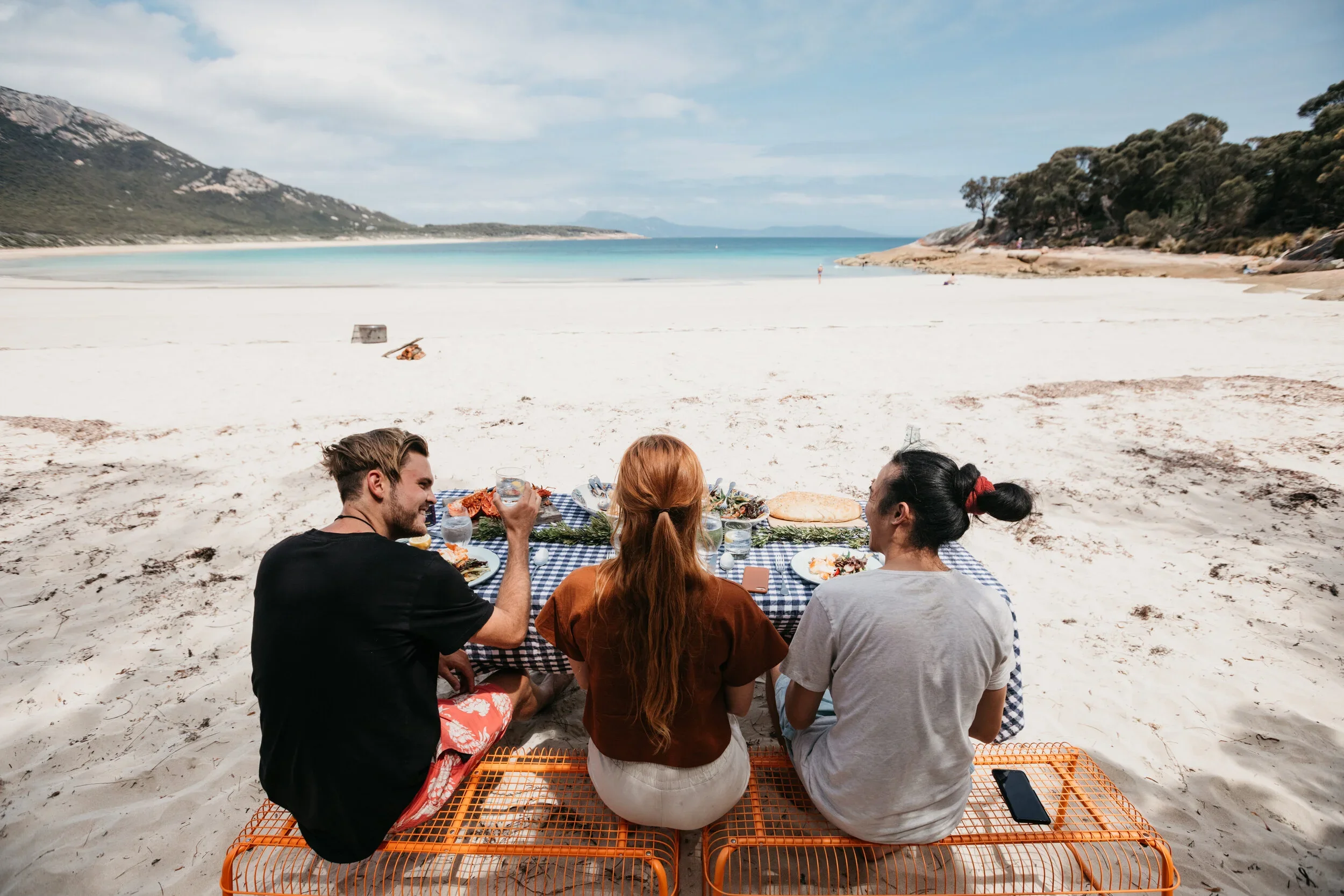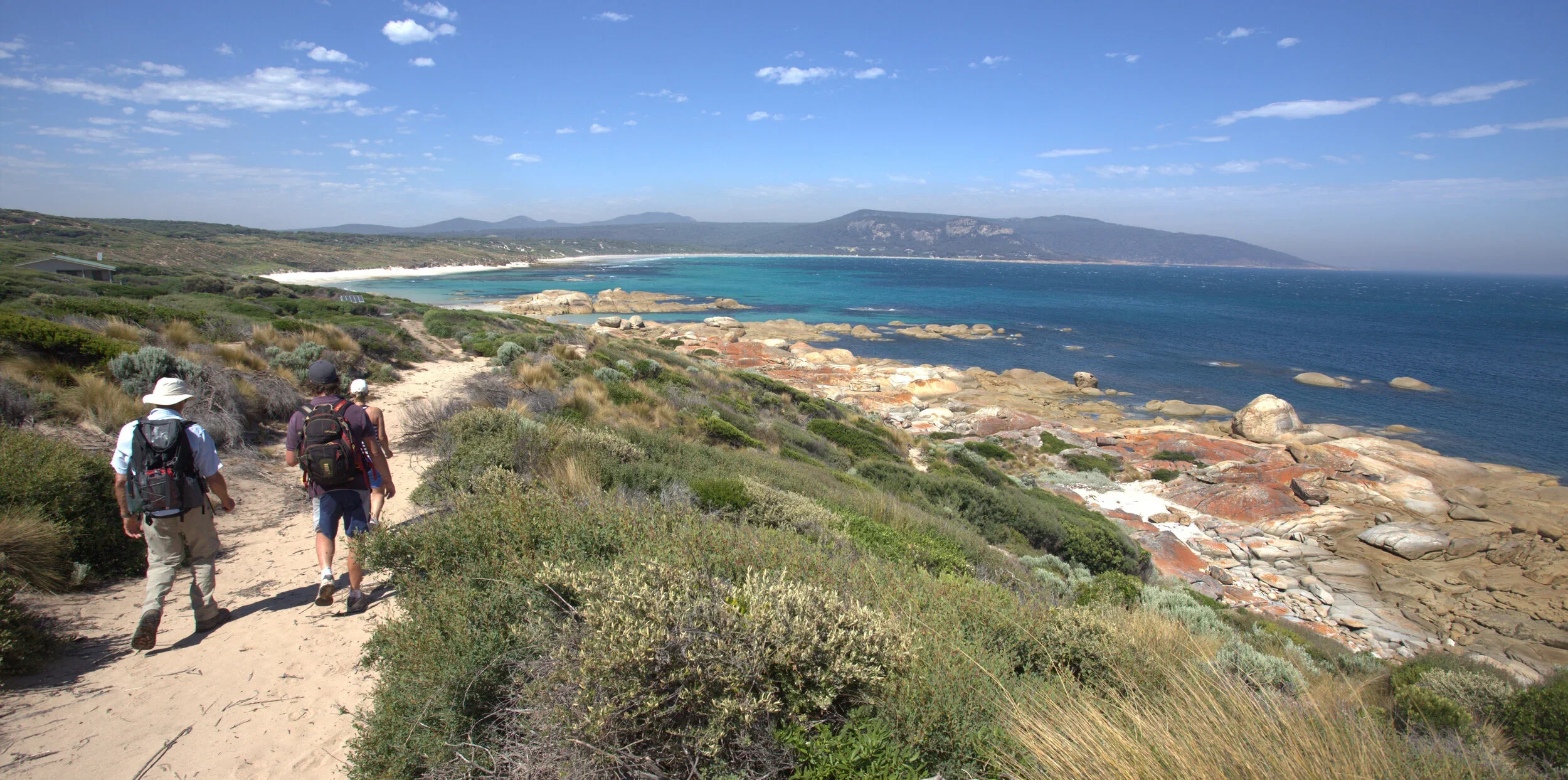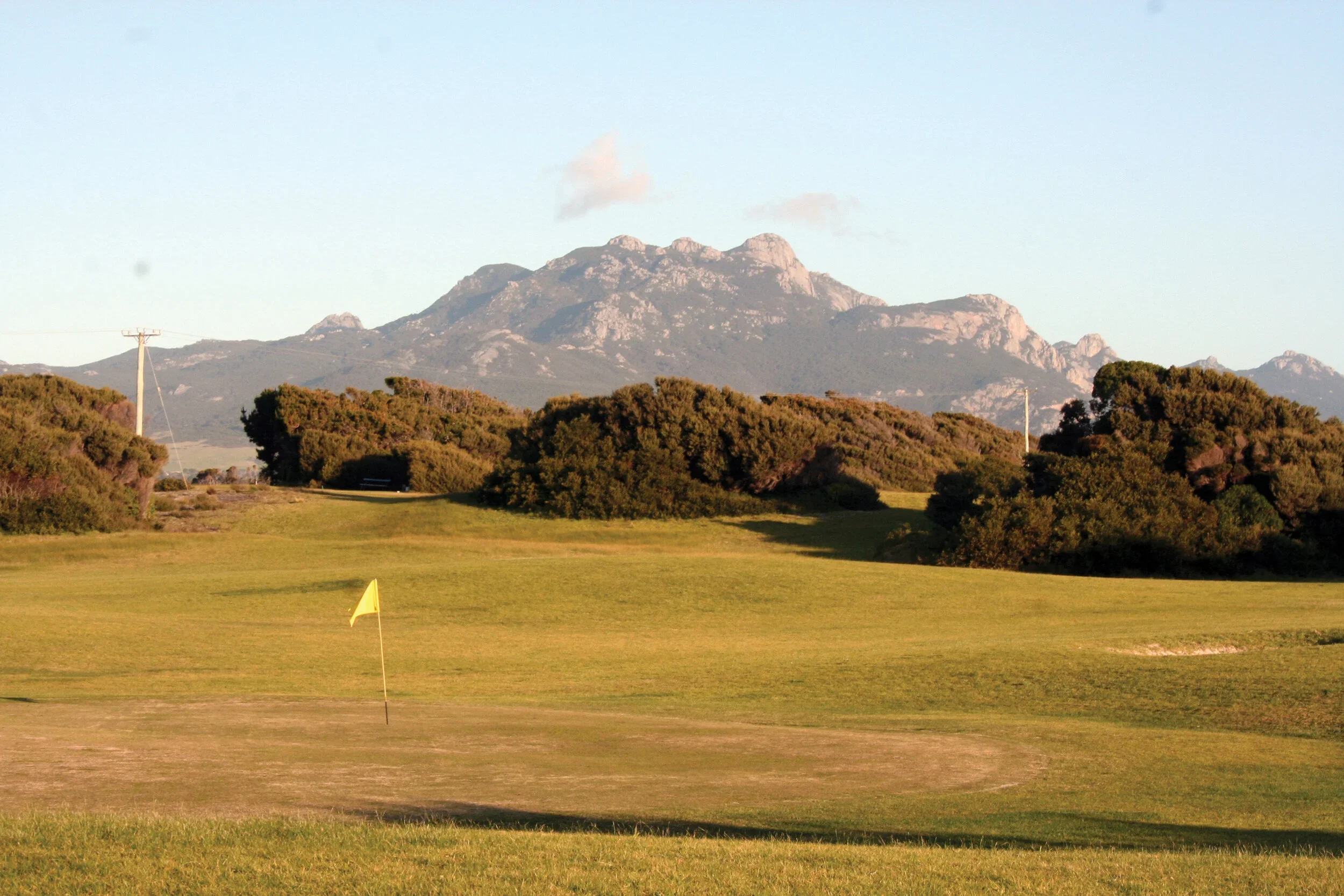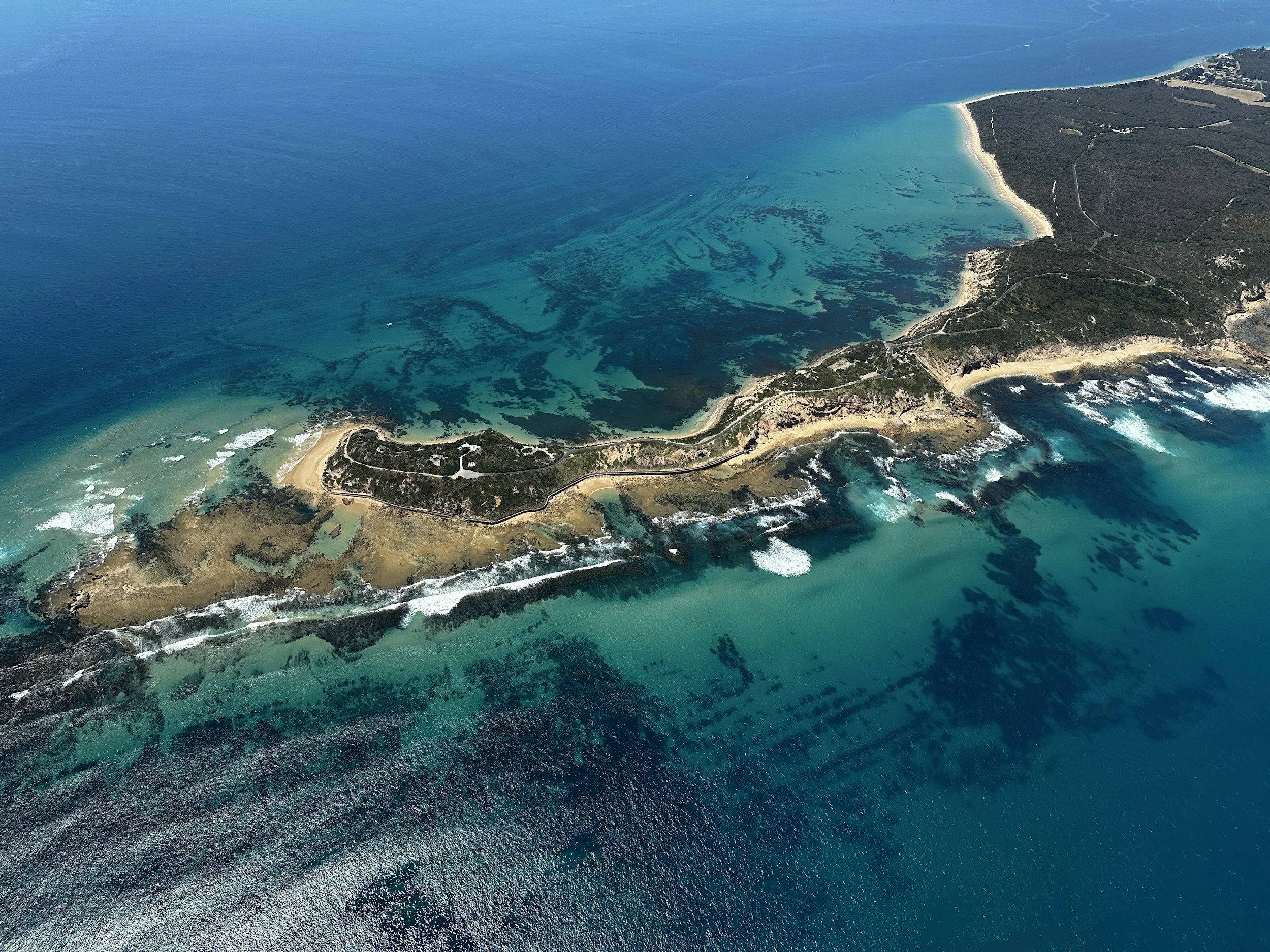
Transport to Flinders Island
Flinders Island
With its deserted beaches, striking rock formations and abundant wildlife, Flinders Island is a hidden gem off the northeast coast of Tasmania. It is the largest island in the Furneaux Group and home to around 900 people, many of whom are farmers, fishers and makers whose lives are intricately linked with the land and sea.
In the small town of Ermita is the Furneaux Museum, where you can discover the island’s First Nations history in the Mutton Bird Processing Hut and learn about the countless shipwrecks that dot the archipelago. Flinders Island’s main settlement, Whitemark, lies at the mouth of Pats River, while the town of Lady Barron welcomes ferries from Tasmania in the island’s south.
A highlight of visiting Flinders Island is exploring Strezlecki National Park, which encompasses pink-hued granite peaks, coastal heaths and blindingly white beaches. It’s home to the highest peak on Flinders Island, Mount Strzelecki, with the hike to the top offering 360-degree views across Bass Strait. Aside from trekking, you can explore the island by mountain bike, cast a fishing line to see what’s biting or venture beneath the water’s surface on a scuba diving tour.
Flinders Island’s exceptional food culture and organic produce are celebrated every year during the Flinders Island Food and Crayfish Festival. Held each April, it features long, lazy lunches and chef demonstrations across the island.
Getting around Flinders Island
Flinders Island’s road network extends across 450 kilometres, with a mixture of both sealed and unsealed surfaces that are suitable for most vehicles. As there is no public transport on the island, most visitors opt to rent a car and explore at their leisure or bring their own on the ferry that connects from Bridport in Tasmania.
That being said, it is possible to visit the island without self-driving. For the more adventurous, you can bring your bike and cycle through the island’s rolling countryside or head out to explore its spectacular landscapes on foot. If you do plan to walk, keep in mind that the island is around 70 kilometres in length and 40 kilometres wide, so allow plenty of time!
One of the best ways to discover Flinders Island is with a local, and there are several tour operators that offer just that. Flinders Island Experience arranges multi-day tours that take in the island’s main sights and lesser-known gems, with a whole lot of insider information thrown in.
Mountain Biking Flinders Island offers tours on two wheels from the town of Whitemark and will get you off the beaten track to explore rugged coastlines and mountainous terrain. Roaring 40s Kayaking also hosts tours for the adventurous at heart, with multi-day expeditions that will see you paddling to offshore islands and through secluded coves framed by granite boulders.
Rockjaw Tours caters primarily to anglers and hunters on their customisable expeditions, as well as offering history tours of nearby Vansittart Island. Tasmanian Expeditions and Trek Tasmania both run walking tours that take in the island’s spectacular peaks, pristine coastline and rolling pastures, with all transport to/from and around Flinders taken care of.
Getting to Flinders Island
Scenic flights connect to Flinders Island across Bass Strait from Launceston, Hobart and Melbourne with Sharp Airlines. During particularly busy periods, Sharp Airlines has a waitlist and may put extra flights on if there is demand, so don’t be deterred if the flights are initially full! Alternatively, you can charter an aircraft with Flinders Island Aviation or Vortex Air at a time that suits you.
A cargo ferry service operated by Furneaux Freight also operates between Bridport on Tasmania’s north coast and Lady Barron on Flinders Island. The journey takes roughly eight hours. It’s worth keeping in mind that there are limited passenger services on board as the ferry primarily transports stock to and from the island.
Trousers Point
On the West Coast of Flinders Island, in the Strzelecki National Park, Trousers Point is known for two beautiful beaches, views to offshore islands and Mt Strzelecki, and unusual rock features.
Trousers Point Beach is the most photographed and celebrated beach on the Island with crystal clear waters, wide expanses of white sand, and a mountain rising from the ocean.
On the other side of Trousers Point is Fotheringate Bay with granite caves and rock formations.
Credit Stu Gibson
Aerial view of Trousers Point Beach.
Credit: Alastair Bett
Sawyers Bay Shacks
Located right on the beach, with no public access for miles, Sawyers Bay Shacks will reconnect you with nature.
The big shack is great for large family holidays, while the small shack is the perfect cosy retreat for couples.
Both shacks have a well-equipped kitchen, dishwasher, quality linen and a double-sided fireplace on the deck.
Credit Luke Tscharke
Split Rock, The Dock, Flinders Island
Credit: Stu Gibson
Castle Rock
Castle Rock is a massive granite boulder by the shoreline on Marshall Beach.
Credit: Rob Mulally
Flinders Island Farmland
Credit: Dietmar Kahles
Flinders Island Beach
Credit: Tourism Australia & Graham Freeman
Road on Flinders Island
Credit: Tourism Australia & Graham Freeman
Trousers Point Beach
Credit Jarrad Seng
Aerial of Killiecrankie Bay, Flinders Island
Credit: Luke Tscharke
Walking track on Flinders Island
Credit: Tourism Australia & Graham Freeman
Flinders Island
Credit: Alice Hansen

